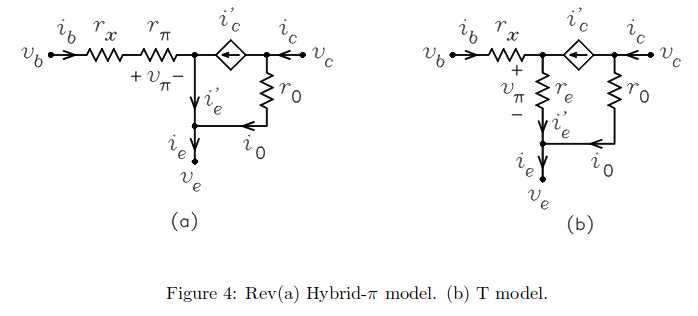In BJT small-signal models there is both re and rπ parameters. They both represent the dynamic resistor between the base and the emitter terminals.
But I read that they are different by a factor of β as:
rπ = β × re
I know the concept of transconductance gm. It is the slope of the Ic Vbe plot at a fixed bias collector current i.e: gm=∂Ic/∂Vbe.
And as definition re = 1/ gm.
So what I understand is that re is the change in Vbe with respect to a change in Ic.
Secondly rπ is the change in Vbe with respect to a change in Ib.
Since there Ic = Ib × β this yields to rπ = β × re
You might think what is my question here. Even though the formulas yield this relation between re and rπ, I don't quite understand how they represent the same thing aka the "dynamic resistance between the base and emitter terminals".
I mean their definitions are same but yet they are different things. They are both the dynamic resistance between the base and emitter terminals in my mind. But they differ by a factor of β. I'm really confused about the approach. Is it about where we look at the base from?



